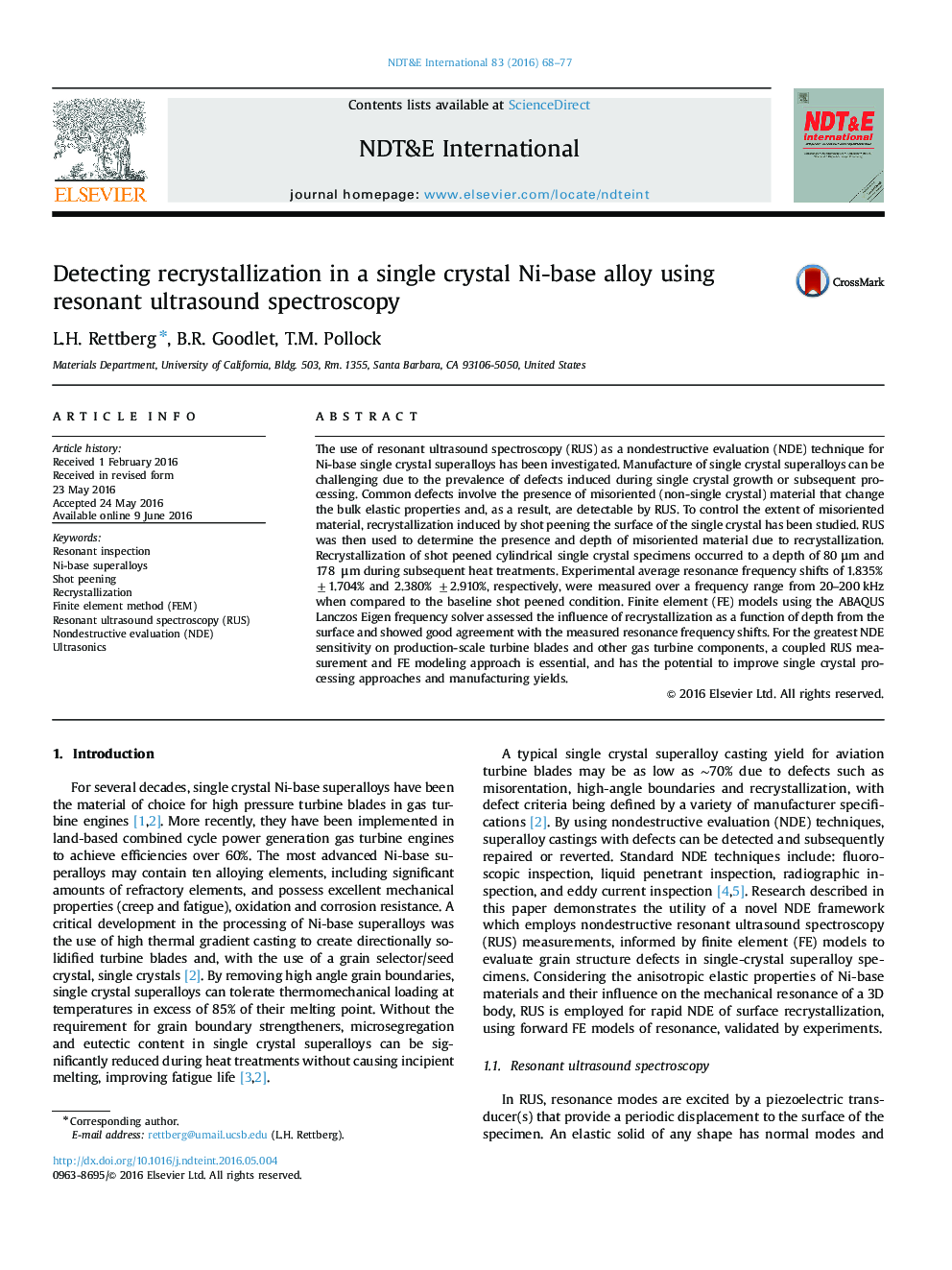| Article ID | Journal | Published Year | Pages | File Type |
|---|---|---|---|---|
| 294943 | NDT & E International | 2016 | 10 Pages |
The use of resonant ultrasound spectroscopy (RUS) as a nondestructive evaluation (NDE) technique for Ni-base single crystal superalloys has been investigated. Manufacture of single crystal superalloys can be challenging due to the prevalence of defects induced during single crystal growth or subsequent processing. Common defects involve the presence of misoriented (non-single crystal) material that change the bulk elastic properties and, as a result, are detectable by RUS. To control the extent of misoriented material, recrystallization induced by shot peening the surface of the single crystal has been studied. RUS was then used to determine the presence and depth of misoriented material due to recrystallization. Recrystallization of shot peened cylindrical single crystal specimens occurred to a depth of 80 μm and 178 μm during subsequent heat treatments. Experimental average resonance frequency shifts of 1.835% ±1.704% and 2.380% ±2.910%, respectively, were measured over a frequency range from 20–200 kHz when compared to the baseline shot peened condition. Finite element (FE) models using the ABAQUS Lanczos Eigen frequency solver assessed the influence of recrystallization as a function of depth from the surface and showed good agreement with the measured resonance frequency shifts. For the greatest NDE sensitivity on production-scale turbine blades and other gas turbine components, a coupled RUS measurement and FE modeling approach is essential, and has the potential to improve single crystal processing approaches and manufacturing yields.
